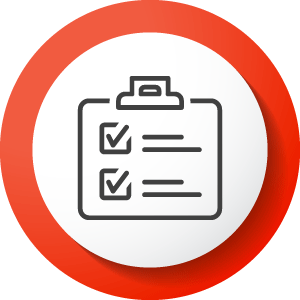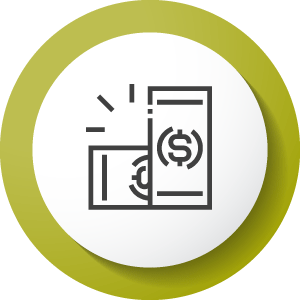With the recent acceleration of the digitalization of the home buying process, lenders and title agents are looking for secure and efficient technology solutions to complete real estate transactions. This educational page is dedicated to explaining the different closing, signing and notarization types, so you can determine what works best for you.
An eClosing is the act of closing a real estate transaction electronically. This occurs through a secure digital environment where some or all of the closing documents are accessed and executed electronically.
ⓘ eClosings result in eMortgages only if the promissory note is in a smart document format and signed electronically
Types of Closings & eClosings
 Traditional Closing
Traditional Closing
Parties appear in person and wet sign and notarize printed documents.
 Hybrid eClosing
Hybrid eClosing
Parties appear in person to eSign most documents, wet sign certain printed documents and notarize or eNotarize* as permitted.
 Full eClosing
Full eClosing
Parties appear in person to eSign and eNotarize all documents.
 Remote Online eClosing
Remote Online eClosing
Parties attend the closing remotely using two-way audio-video technology to eSign and remotely eNotarize all or most documents.
 Remote Traditional Closing
Remote Traditional Closing
Available by Executive Order only, parties attend the closing remotely using two-way audio-video technology, where the notary observes the wet signing of the documents. The wet-signed documents are returned to the notary for them to complete the certification and execution and affixation of the official notary stamp or seal.
Types of Notarizations & eNotarizations
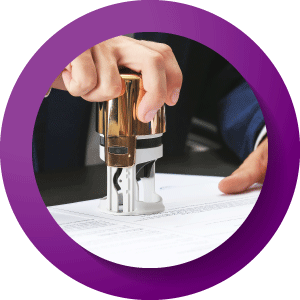 Traditional Wet Ink Notarization (TWIN)
Traditional Wet Ink Notarization (TWIN)
Documents are wet-ink notarized, in the presence of the notary.
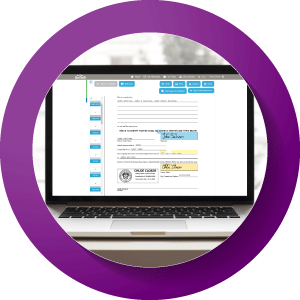 In-Person Electronic Notarization (IPEN)
In-Person Electronic Notarization (IPEN)
In-person electronic notarization (IPEN) completed, using an internet-enabled device.
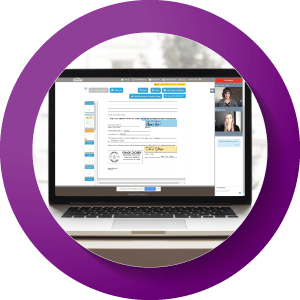 Remote Online Notarization* (RON)
Remote Online Notarization* (RON)
eNotarization with participation from separate physical locations using two-way audio-video technology.
 Remote Ink-Sign Notarization** (RIN)
Remote Ink-Sign Notarization** (RIN)
Documents are printed and wet-ink signed while notary observes via two-way, audio video technology. Those documents are delivered to the notary for certification, execution and affixation of the official notary stamp or seal.
*Due to platform capabilities, state law or regulation or all, electronic notarization and remote online notarization are not available in all areas. **Users should consult their title insurance underwriter, if applicable, laws, regulations, and Executive Orders applicable to each signing session. Users are solely responsible for all steps necessary to ascertain, determine, meet, and verify compliance with all applicable orders, laws, regulations, rules and requirements governing any notarial or other execution of writings facilitated in whole or part through Pavaso’s Essential Notary™ or any other Pavaso technology.
Now, let’s take a look at how the types of closings and notarizations work together to create different closing options.
Traditional Closing
Parties appear in person and wet sign and notarize printed documents.
Paper
Wet-Ink
Wet-Ink
Traditional Means
In-Person
No
Hybrid eClosing
Parties appear in person to eSign most documents, wet sign certain printed documents and notarize or eNotarize as permitted.
Electronic & Paper
Electronic & Wet-Ink
Electronic & Wet-Ink
Traditional Means
In-Person
Yes, but not required
Full eClosing
Parties appear in person to eSign and eNotarize all documents.
Electronic
Electronic
Electronic
Traditional Means
In-Person
Yes, but not required
Hybrid or Full Remote Online eClosing
Parties attend the closing remotely using two-way audio-video technology to eSign and remotely eNotarize documents. If some documents, including the promissory note, are wet ink signed and notarized, then this type of closing is known as Paper Remote Online Notarization (or PRON) transaction.
Electronic
Electronic
Electronic
State specific multi-factor requirements, which includes knowledge-based authentication (KBA), automated authentication of government-issued photo ID, and/or visual inspection of ID through video technology.
Remote
Yes, but not required
Remote Traditional Closing
Parties attend the closing remotely using two-way audio-video technology, where the notary observes the wet signing of the documents. The wet-signed documents are returned to the notary for them to complete the certification and execution and affixation of the official notary stamp or seal.
Paper
Wet-Ink
Wet-Ink
State specific multi-factor requirements, which includes knowledge-based authentication (KBA), automated authentication of government-issued photo ID, and/or visual inspection of ID through video technology.
Remote
No





